Bronzino’s Madonna with Child, St. John the Baptist and St. Anne – meaning a song of love sentenced to suffering

Madonna with Child, St. John the Baptist and St. Anne, fragment, Bronzino, Galleria Colonna - Palazzo Colonna
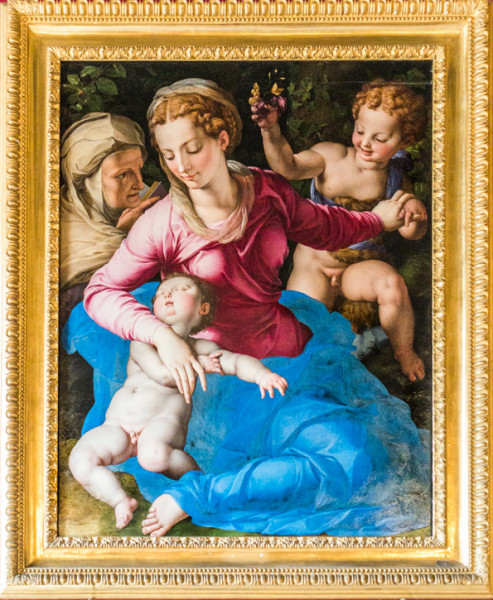
Madonna with Child, St. John the Baptist and St. Anne, Bronzino, Galleria Colonna, Palazzo Colonna
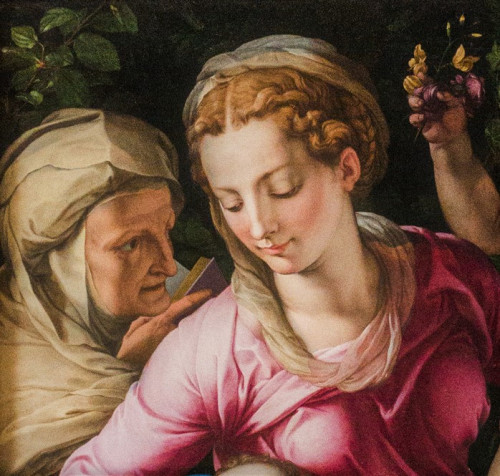
Madonna with Child, St. John the Baptist and St. Anne, fragment, Bronzino, Galleria Colonna - Palazzo Colonna
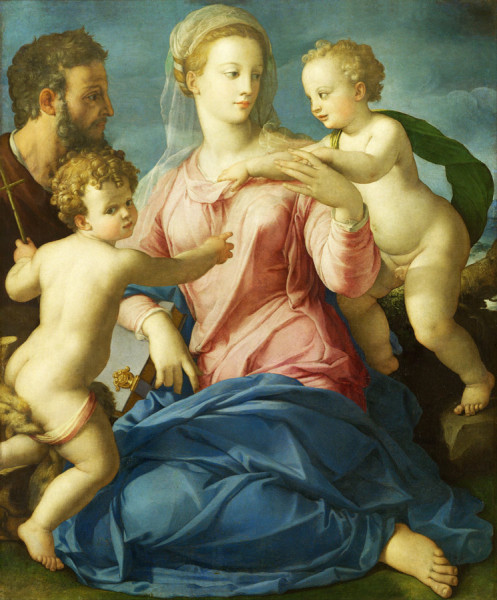
Bronzino, Holy Family with John the Baptist, Pushkin Museum, Moscow, pic. Wikipedia
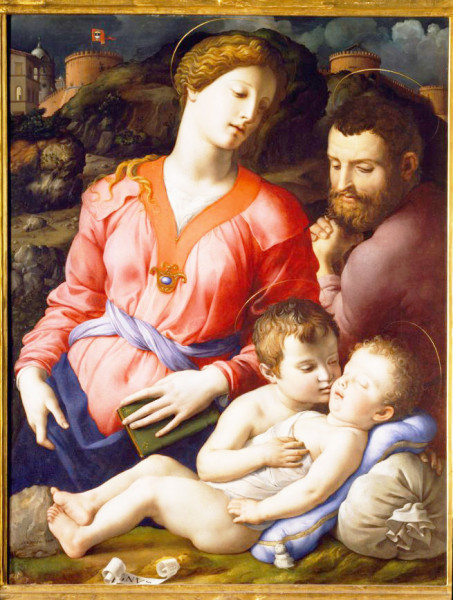
Bronzino, Holy Family with John the Baptist, Galleria degli Uffizi, Firenze, pic. Wikipedia

Bronzino, Holy Family with John the Baptist, Kunsthistorisches Museum, Wien, pic. Wikipedia
Looking on at this painting, we can have no doubts: the scene depicting the Madonna with Child, one of the most well-known and popular iconographic motifs of Christian art is filled with a certain mystery, something that destroys the canon of this representation. We feel that there is "something besides that which is known", but what is it?
Looking on at this painting, we can have no doubts: the scene depicting the Madonna with Child, one of the most well-known and popular iconographic motifs of Christian art is filled with a certain mystery, something that destroys the canon of this representation. We feel that there is "something besides that which is known", but what is it?
In 1911 the great art historian Bernard Berenson attributed this painting to the artist known as Bronzino, who around the mid-XVI century was active in Florence in the court of Duke Cosimo I de' Medici. This was a painter and a poet who along with a number of outstanding creators made up the artistic community of the de' Medici court, painting technically and compositionally refined works, characterized at the same time by an elaborate elegance. Not all historians agree with such an attribution. Perhaps this work was painted by one of the colleagues of the artist or one of his students (Alessandro Allori?). However, this does not change the fact, that we are dealing with an exceptional in its beauty painting. In the collections of the Galleria Colonna, it is presented as Bronzino's work and let us (despite the doubts) treat it as such.
The Madonna, who is dominant in the painting, is shown in a seated position with her legs folded and a bare foot and is cradling a boy who seems to be falling onto her hip as if the painter attempted to capture the moment when the child – dead tired – falls asleep. What is the reason for this tiredness, which can be also be seen by the rosy cheeks of the little boy? With one hand the Madonna is hugging her son, while attentively and lovingly looking at his shut eyes, with the other she seems to be stopping the young John the Baptist. He, Jesus's peer, not paying attention to the fact that the other boy is sleeping, is trying to encourage him to play. Maria is pushing him away as if she was trying to stop the inevitable, halt fate. Behind the Virgin, we also see the face of an old woman, probably her mother Anne, although some say it is Elizabeth, the mother of John the Baptist. The fact, that she is holding a book in her hand, lets us assume that it is, in reality, Jesus's grandmother. Her face, with a dark complexion, captured against the light, is in direct contrast with the face of Our Lady and the two boys. And while the Madonna’s visage is characterized by the typical for Florentine Mannerism subtlety and delicateness, Anna has somewhat fearsome features. She is after all holding the Bible, in which the coming of the Savior and his martyr's death has been foretold. And thus, the image of the Madonna with Child is transformed into a pieta – a scene, in which the Virgin Mary is supporting the dead body of her son. The cozy family scene is somewhat anticipating the future suffering and death, which is foretold by Anne who is holding the book, and (the future prophet) John the Baptist, wielding a bouquet of flowers in his hand – the symbols of martyrdom and sacrifice.
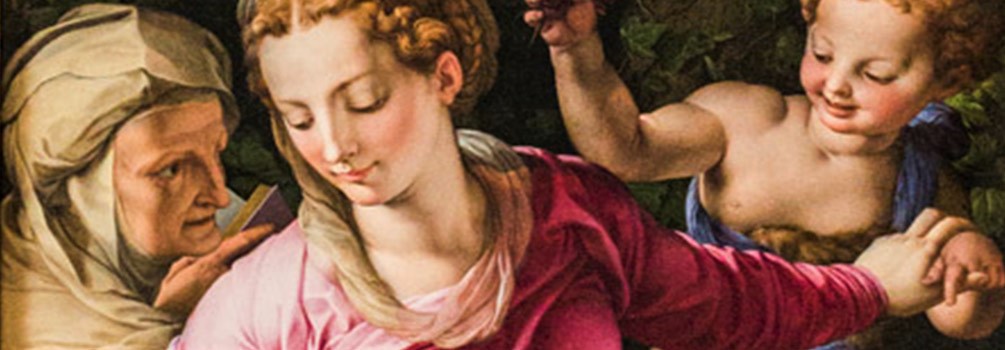
The strange, vertical composition showing Mary with the body of her dead son often appears in the art of the late Renaissance. This very compositional scheme had been used by Michelangelo himself, creating his final pietas. But, the influence of Michelangelo can also be seen in the placement of the Virgin’s legs, well-known from the absolutely revolutionary Doni Tondo (1507), which for the then Florentine Mannerists was a constant source of inspiration. Looking closely at the composition, we notice the shape of the letter X – one of the lines diagonally crosses through the head of John the Baptist, the chest of Mary and the head of Jesus, the other – through the thigh of the Virgin, the head of the sleeping boy, and Anne’s head. The figures are crowded, painted as if on the edge of the wood. It seems that they are about to come out of the painting or fall from it. The light – strong, bright, as if it was a light from a lamp – comes out of the left corner, taking away the color from the Madonna’s robes. Their selection is no accident. The carmine references the offering of blood, which Jesus shall give on the cross, the blue is associated with the Queen of the Heavens.
Our Lady – “besieged” by Anne and John reminding her of the tragedy which is yet to come – seems to be oblivious to these signals and prophecies; her face is filled with love, while her gaze and touch emanate with an almost divine joy.
This is a story of a mother's love, but also the anticipated misfortune, about divinity which fills everyday life on Earth, and about the participation in the act of salvation given to each of the faithful.
Madonna with Child, St. John the Baptist and St. Anne, Bronzino (born Agnolo di Cosimo di Mariano Tori) or one of his students, approx., 1535, oil on wood, 121 x 95 cm, Galleria Colonna, Palazzo Colonna
If you liked this article, you can help us continue to work by supporting the roma-nonpertutti portal concrete — by sharing newsletters and donating even small amounts. They will help us in our further work.
You can make one-time deposits to your account:
Barbara Kokoska
BIGBPLPW 62 1160 2202 0000 0002 3744 2108
or support on a regular basis with Patonite.pl (lower left corner)
Know that we appreciate it very much and thank You !

